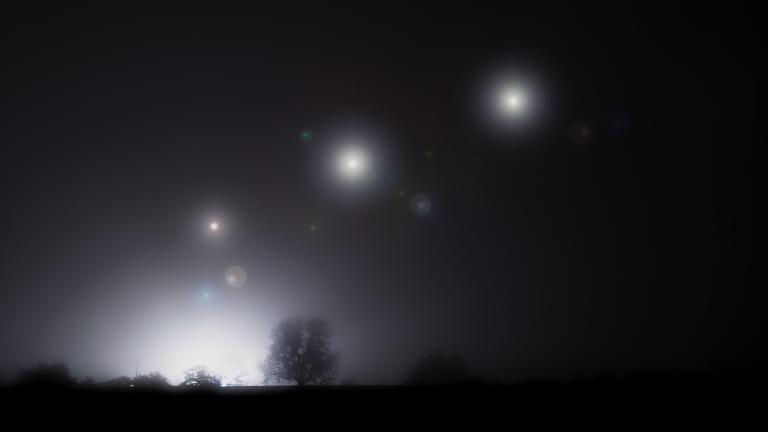
Read more about Mysteries

Does the UK have anything to fear from the alleged threat of extraterrestrials? Judging from many reported UFO sightings, you’d think the United States must be Earth’s only country where aliens want to holiday. The most iconic UFO story is that of Roswell, the New Mexico city close to where a UFO supposedly crashed in 1947.
Does the UK have its own version of the Roswell tale? One strong candidate is the 1980 Rendlesham Forest incident — one of many cases investigated on the Sky HISTORY series Craig Charles: UFO Conspiracies. Then there’s what history has come to know as the Lakenheath-Bentwaters incident...
The Lakenheath-Bentwaters incident is said to have begun on the evening of the 13th August 1956. However, the specifics of what happened are not entirely clear. Numerous sources directly involved with the original incident have released muddled, contradictory testimonies.
The most commonly-told version of events was recorded by the United States’ Project Blue Book. This study, running from 1952 to 1969, analysed various UFO reports made during the early Cold War era. Here’s a rundown of how, according to Project Blue Book, the Lakenheath-Bentwaters incident unfolded.
Though the Lakenheath-Bentwaters incident took place in eastern England, the United States was still very much involved. It began when UFOs were spotted by radar operators at RAF Bentwaters, itself tenanted by the United States Air Force (USAF).
At about 9.30pm on 13th August 1956, the radar operators started tracking what they must have initially assumed was an innocuous approaching aircraft. However, it was flying at over 1,000 miles per hour. That kind of speed was unheard of for aircraft at the time.
Around the same time, a separate set of targets emerged before seemingly merging to form just one much larger target. On the radar, the return was several times larger than that of a B-36. That’s a bomber with a mammoth 230-foot wingspan!
Lieutenants Charles Metz and Andrew Rowe were tasked with taking a T-33 jet trainer to the sky to inspect the suspicious targets. However, the two men’s efforts went nowhere.
Not that things stayed quiet for too long. At 10:55pm, Bentwaters detected yet another mysterious target approaching. This one was travelling at an estimated speed of roughly 2,000 to 4,000 miles per hour.
As the new target was detected passing above the base, a fast-moving white light appeared. Judging from reports, it was seen from the ground as well as, quite possibly, a C-47 aircraft flying 4,000 feet above Bentwaters.
This all led Bentwaters to alert another nearby US-tenanted Royal Air Force station, RAF Lakenheath. Ground personnel based here spotted several luminous objects, including two which appeared to converge.
Much of the established story comes from Lakenheath watch supervisor Forrest Perkins. According to Perkins, the Royal Air Force (RAF) scrambled two de Havilland Venom aircraft in a bid to intercept a radar target near Lakenheath.
The story goes that one Venom closely pursued the target before the latter manoeuvred behind the RAF aircraft. The target gave chase for about 10 minutes, despite the RAF pilot’s concerted endeavours to shake it off. Eventually, the Venom returned to base, while the target stopped and subsequently disappeared, flying northwards.
Writing to the Sunday Times in 1978, Freddie Wimbledon — the radar controller at RAF Neatishead during the Lakenheath-Bentwaters incident — corroborated several details of Perkins’ account. These included the UFO’s apparent pursuit of the Venom.
In the late 1960s, the USAF funded a University of Colorado study examining reports of UFO sightings. The Condon Committee, as this study was informally known, opined that 'conventional or natural explanations' seemed insufficient for the Lakenheath-Bentwaters incident.
According to the committee, 'the probability that at least one genuine UFO was involved appears to be fairly high'. This purported UFO would not necessarily have been of extraterrestrial origin.
One common theory is that the lights were shooting stars, as the sightings coincided with a Perseid meteor shower. Alternatively, the anomalies may have resulted from radar malfunctions. However, this is unlikely, as multiple radar systems were used to track suspicious targets during the incident.
By subscribing to the Sky HISTORY Newsletter, you can get further exciting, extraterrestrial-themed content sent to your email inbox.